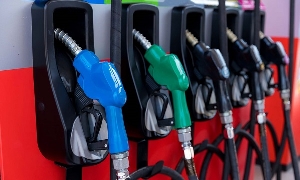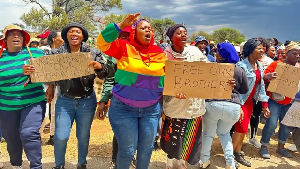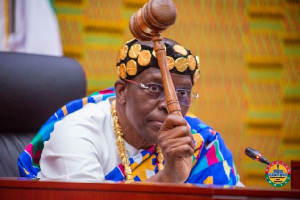Introduction
The history of Northern Region as part of the modern state of Ghana started with the push by British soldiers garrisoned in the coastal forts and castles into the interior to conquer and colonise the land carved out by the European powers at the Berlin Conference in 1884 for the British.
By 1900 that task had been accomplished. The eastern boundary of the British colony then called the Gold Coast, shared with the German colony Togoland, was marked by the Volta River in the south and extended north along the Daka River. Thus the eastern part of contemporary Northern Region including Yendi and the Volta Region were part of German possessions until the Germans lost World War I and all their African possessions in 1919. From then till 1957 when the country gained independence from the British and changed its name from the Gold Coast to Ghana the whole of the upper half of the country was one big region called the Northern Territories.
At independence the name changed to Northern Region. In 1960 the Upper Region was carved out of the Northern Region but still remained the largest region covering one third of the land surface of Ghana.
Physical features
Northern Region is the largest of the ten Regions of Ghana, covering about 70,390 km2 of the country's 238,540-km2 landmass. It stretches across one third of Ghana from its western boundary with La Cote d' Ivoire to its eastern frontier with the republic of Togo. Nature and culture appear to have teamed up to divide Ghana into two very distinct parts, North and South. A visit to the North is therefore a must if you want a complete, stereoscopic view of this beautiful country.
As you travel towards the North from Accra or Cape Coast, changes unfold before you. From the middle section of the country, the vegetation becomes sparse as the guinea savanna takes over the tropical rainforest of the south. The land features are also low- lying and flat and the climate slightly hotter. Alongside this transformation of the natural environment, a visitor would also observe a marked difference in the cultural patterns; the most obvious being the design of the traditional houses.
The physical features of the region consist of flat lands mostly below 500 feet in elevation, apart from small portions of the western area and North Eastern corner where the Gambaga scarp appears like outcrops in the surrounding flatland of the Volta Basin.
Drainage
The Northern Region is part of the Greater Voltaian drainage system, which drains into the Volta Lake through White Volta, Black Volta, River Oti, Nasia River, Kulpawn Daka, and Nasia, which are fairly big rivers but are hardly used as a mode of transportation. Our tropical climate means there is sunshine 12 months of the year. It only varies in intensity depending on the two seasons, rainy and dry, which alternate from April to October and November to April respectively.
Maximum temperature levels of 31?C occur towards the end of the dry season while night minimum temperatures of 18?C occur in January at the height of the dry Hammattan winds which blow in from the Sahara desert.
The Region's natural vegetation is Guinea Savanna Woodland characterised by grassland, clusters of shrubs, short trees and a few species of big tall trees such as baobab, kapok and mahogany. 21 forest reserves scattered across the Region protect 373,000 hectares of the Region's vegetation together with 4,000 hectares of plantation forests.
The 2 million population of the Region are made up of a good proportion of non- indigenous people including expatriates; but more than 95% belong to the 50 odd indigenous tribes. Prominent among them are the Dagombas, Gonjas, Mamprusi, Nanumba, Vaglas, Lobis, Nchummurus, Bimobas and Konkombas, Basaris, Nawuris. The population of Tamale the Regional capital is 218,051
About 72% of the population is engaged in agriculture, the predominant sector of the Region's economy. The second largest employment group is composed of traders followed by small-scale manufacturers and processors.
The Region is a breadbasket of the country feeding Ghanaians with the abundant harvest of cereals, rice, maize, millet, yam and livestock. Cash crops such as cashew, cotton and especially shea butter are very important agricultural produce. The hospitality industry is picking up especially in Tamale.
The potential for mineral production is very high. The region has a wide range of mineral deposits, which could possibly be commercially exploited. Limestone, dolomite, iron ore and gold have proven commercial quantities, but are yet to be exploited. Also important is the rock salt formation.
Climate
The Northern part of Ghana is dry compared to the South. The rainy season extends from April to October and the dry season from November to March. In spite of the wide difference in rainfall levels between the seasons, the annual rainfall is enough to make the region the breadbasket of Ghana.
Political administration
Since 1992, Ghana has pursued constitutional rule, which prescribes an Executive Presidential system of government.
All the regions have a Regional Minister as the political head who administers the regions with the help of Regional Co-ordinating Council.
The ten Regions of the country are sub-divided into a total of 110 districts for administrative purposes, thirteen of which are in the Northern Region. Below are the Districts and their capitals:
District Capital
Tamale Metropolitan - Tamale
Savelugu/Nanton District- Savelugu
West Mamprusi District -Walewale
East Mamprusi District - Gambaga
Saboba/Cheriponi District - Saboba
Zabzugu/Tatale District - Zabzugu
Yendi District - Yendi
Tolon/Kumbungu District -Tolon
Nanumba District - Bimbilla Gushegu/Karaga - Gushegu East Gonja District - Salaga
West Gonja District - Damongo Bole District - Bole
All the district capitals are connected to the national electricity power grid. They have water supply even though not all have pipe borne system and are also linked to a national telecommunication network.
Tamale
Tamale the capital is the 4th largest regional capital and the fastest growing city in West Africa. It is the transport hub and commercial centre of the whole Northern Ghana. The central district has been transformed into a bustling, modern commercial centre. Bicycle lanes (the only one in the country), street lights, pedestrian walkways, traffic lights and other public utilities have attracted more private businesses such as supermarkets, hotels, internet cafes and others into the newly designated Metropolis.
The rest of the region especially the district capitals all have their share of improved infrastructure. However, most roads in between towns are not tarred.
Access to the Northern Region -Air
Air access is also available to the region. At present, the airport handles a small number
of domestic flights. International Air flight landings cannot be made there. An airstrip in good condition exists at Mole National Park.
Road transport
Access to the Northern Region is provided on the major highway routes to Tamale from the south and north.
The region has a total road network of 2,458kms of which 277kms are tarred and 2,181 kms have a gravel surfacing. About 25% of the roads are considered to be in good condition, 23% in fair condition and 52% in poor condition. The route which serves Mole National Park, is gravel and dirt.
Bicycles are widely used in the Northern Region.
Volta late transport
The navigable waterway of lake Volta extends about 224 nautical miles or 415
kilometres from Akosombo to Buipe with stops at Yeji and other places. The Volta lake Transport Company (VlTC) js responsible for the development and operation of transportation on the lake.
History of the people of the northern region
The Komas were probably the earliest known inhabitants of the area now known as the Northern Region. Even though the Komas have disappeared as a distinct tribe they have left behind a treasure trove from their period. Archaeological diggings in west Mamprusi have unearthed terra cotta figurines, pottery and dress accessories from the first half of the last millennium. Some of these can be viewed at the Museum showroom in Bolgatanga. One of the earliest indigenous tribes to settle in present day Northern Region were the Gonjas who are Guans just like the Nchummurus of Brong Ahafo and the Lartehs, and Efutus of the Eastern and Central regions respectively.
In the early 1600's one of the greatest kings of ancient Ghana, Ndewura Jakpa created the Gonja Kingdom, which is still one of the largest kingdoms in Ghana.
The Dagombas call their kingdom Dagbon. The overlord or king of Dagbon is called the Yaa Naa and the seat of his Paramouncy is Yendi. They trace their ancestry to Zamfara in present day Nigeria from where their common ancestor, Tohazie or the Red Hunter travelled to Biung. Gbewa, Tohazie's grandson settleD in Pusiga in Upper East Region from where his sons Sitobu, Tohagu and Matambu migrated southwards and founded Dagbon, Mamprusi and Nanumba kingdoms.
From this colourful and proud history we have inherited a basketful of historical attractions.
ADVENTURER'S DREAM DESTINATION
There are three reasons to visit Northern Region.
1. Rich historical, natural and cultural attractions.
2. The circuits in one region
3. Hospitable people, tropical climate and open country
NORTHERN REGION-A DIFFERENT GHANA
The uniqueness of the attractions in the Northern Region has been the main draw for tourists who are streaming to Tamale in numbers. The young and the adventurous have found a different destination yet to be discovered by mass tourists.
The Northern Region is a place for lovers of nature. Its natural features of scenic and beautiful vegetation contain some exotic species of flora and fauna and offer a different experience of adventure in nature and wildlife.
The savanna vegetation enhances the fantastic panoramic view from the Gambaga excarpment and Karamenga hills while offering opportunities for hiking, trekking and loeing.
thing however, compares to the Region's rich nature reserves. The Mole National rk for example is one of the largest and best developed National Parks in West Africa. the 4,840km2 nature reserve is home to a variety of reptiles and mammals such as elephants, apes, antelopes, eagles and 400 other species of animals. The park also offers receptive facilities and services, such as a hotel, restaurant, swimming pool, game-wing platform and safari.
i National Park, the other National Park, does not boast of such services, but the iety of wild life especially the resident Hippos makes it a place to be for adventure.
The variety of birds at the Zongchagni oxbow lake, Daboya, Sabari, Nasia and the nature reserves are beginning to attract ardent bird watchers to these sites.
Forest reserves and tree plantations have been created by the Forestry Department in Tamale, Vendi, Damongo and Bole, and they add a touch of tropical rain forest to the rural savanna vegetation of this region.
The sacred groves are traditional nature reserves created around shrines. These groves sheaIter medicinal herbs, rare and near extinct plants among many exotic plants. The Igbo shrine and the Kalvogu sacred groves are the best known of sacred groves in the Northern Region, which have attracted the attention of U N ESCO.
HISTORICAL NORTH
Legacies of the region's historic past are also on offer for visitors with special interest. For instance, archaeological sites in West Mamprusi have yielded interesting relics of the Komas from the 9th century.
For the African in the Diaspora searching for his roots, castles on the coast may serve as the remaining reference points of departure for their ancestors, but the Northern Region is the most likely place to trace his ancestry. Nowhere in the country can you find more ancient slave markets and relics than in the Northern Region.
The cultural features of the people in the North are as unique as they are diverse and so different from any other in and around the country. These include festivals and religion. Salaga for example was described as the emporium of West African trade at the height of its glory.
SUGGESTED TOUR CIRCUITS ..
THE SOUTH WESTERN CIRCUIT
ACCESS: The region is one Region you can get to by the air, water- i.e.lake transport and road.
By the main north-south highway from the national capital through Kumasi you cross the Black Volta into the Northern Region at Buipe.
Buipe is also the terminal port of the Volta lake transport service from Akosombo in the south to the north. The south-western circuit is made up of two districts, Bole and West Gonja. Both are dominated by the Gonjas but there are minority indigenous tribes like the lobis, Bandas, Mos and Vaglas.
The wildlife circuit starts at Buipe where a wildlife ranch for antelopes, porcupines and other small game has been developed by SAKFOS Farms, one of its kind in Ghana. There are plans to introduce Ostriches and other wild animals on this 500-acre farm.
Also in Buipe precisely at its old site is located the tomb of the Great Ndewura Jakpa, the Gonja king who conquered Gonjaland, the largest kingdom in Ghana. From 1622 to 1667 he ruled and established one of the strongest kingdoms in Ghana.
The northwest journeys brings the visitor to Damongo, the District capital of West Gonja and the traditional capital of the paramount chief of the Gonjas with the title Yagbon Wura. Two very important stops or detours can be made before getting to Damongo:
BUSUN'U: Slave raiders mainly from the Sahel Region of Mali and Niger raided and terrorised tribes in Gonjaland. One of most notorious was Samori. In 1896 Samori and his soldiers intervened as mercenaries in a fight for the kingship of Gonjaland. The Gonjas were massacred at Jentilpe where a mass grave still exists. The remnants of the Gonjas retreated to Busunu where they made a stand and defeated Samori and his soldiers.
DABOYA: this town across the White Volta off the main road to Damongo is perhaps one of the most unique craft villages in West Africa. It is a town synonymous with Fugu (smock) the hand-woven striped cloth worn exclusively by the people of the northern part of Ghana, from the spinning of the yarn to the weaving strips, every stage is done by hand and it is the main occupation of the majority of the inhabitants.
At Larabanga, the ancient mosque and mystery stone have featured in every tourist guidebook. The people of this village, known as the Kamaras, are descendants of the Muslim cleric who gave Ndewura Jakpa spiritual protection during wars. Legend has it that he threw a spear and where it landed was where he built the mosque some four hundred years ago. He also left behind a Quran just as old as the mosque reputed to have been sent down by an angel. This trio of mystics is completed by a stone, which cannot be moved. Thus the road from Larabanga toward the west had to be constructed around the stone.
ECO TOURISM
If you want little adventure away from the well-beaten track then the Northern Region is the ideal destination for you. The combination of the variety of eco tourism assets, relics of the slave trade against the background of diverse and very different culture is providing the draw for the increasing number of the energetic and courageous finding their way to Tamale.
MOLE NATIONAL PARK
Mole National Park is the country's premier park for game viewing and perhaps the most important single attraction in the Northern Region. It was established in 1958 and re- designated as a National Park in 1971. Covering about 4840km2 of undulating terrain with steep scarps, with pristine guinea savannah vegetation and gallery forest along the rivers and streams, the park is home to almost 90 animal species notably elephants, buffalo, roan, kob, hartebeest, waterbucks, bush pigs, and 4 primate species. Lions, leopard and hyenas also occur and over 300 birds species have been recorded. The park is located in the West Gonja district, about 143km(96miles) west of Tamale, in the Tamale-Wa trunk road.
How to get there: An O.S.A. Bus runs a daily trip to the park. It leaves Tamale daily at 2:30pm. You can also drive there with your own vehicle.
Accommodation/Restaurant Facilities
The Park has a 31-room hotel, which has a total of 87 beds. All rooms are en suite. There is also a restaurant offering local and continental cuisine. You can also relax after the first safari by the poolside. Game viewing at the parks is from 6:30am to3: 30pm. Visitors are provided with armed guides for hire.
BUI NATIONAL PARK
A journey westwards takes the tourist some 100km from Larabanga to Bole. The journey passes through Jentilpe and Nyange, the original capital of the Gonjas.
The main attraction in the Bole district is the Bui National Park but other sites to see are three ancient mosques at Bole, Banda Nkwanta and Makuma. They are all built in the same Sudanese architectural style as the Larabanga mosque. It is also the best opportunity to see the famous Lobi culture in any of the Lobi villages, their architecture, pottery and other crafts. The bold and curious can consult the powerful Sonyor Kupo Shrine at Sonyor.
The star attraction in the Bole District remains the Hippo Sanctuary within the Bui National Park. A journey in a 4x4 vehicle takes 45 minutes to the banks of the Volta River at Ntereso. With the help of a guide and a hired canoe you can paddle to the grazing hippos some 5 km down stream.
BIRD WATCHING
The Northern Region attracts a lot of birds because of certain favourable conditions. The abundant grains produced here together with the wild grains of the savanna grass, water bodies such as the wetlands behind irrigation dams, the ponds and rivers are feeding grounds while protected areas like forest reserves and nature parks give them sanctuary. Also areas around the Mole and Bui, the wetland around the Nasia, River Oti at Sabari and the Zongchagni ox-bow lake near Savelugu. Between Nasia, Karamenga and Daboya bird watching is popular.
HOW TO GET THERE
A flight from Accra to Tamale takes just about one hour. The journey by road through Buipe continues to Tamale on one of the best highways in Ghana. The coaches of the Intercity STC and other private transport companies take nine hours.
The circuit starts with the Ancient Slave Trade relics in the Salaga District. Another route to Salaga is through Makango where a ferry carts goods, vehicles and passengers from Yeji on the Brong Ahafo side of the Volta Lake to Makango. These are either coming from Kumasi by load or from Yeji by Volta Lake Transport Company passenger boats originating from Akosombo.
THE SLAVE TRADE HERITAGE
The African American who is looking for his roots needs to go beyond the castles on the coast. They have to come to the northern region specifically to Salaga where the biggest of the slave markets of the 17th to 19th century was located. Some of the relics of that period, which remain virtually intact in Salaga, are the hundreds of wells, which supplied water to the millions of merchants, slaves and beasts of burden, the market place, the bath troughs and the warehouses.
Other towns in this circuit also hold remains of the slave trade. In Yendi, the tomb of Babatu, one of the notorious slave raiders can be found near his house. His descendants still have his arms and armours as heirloom.
Yendi is the paramount seat of the king of Dagbon, the Yaa Naa. The Dagombas have a truly turbulent history and this is reflected in sites to be seen around Yendi. At the outskirts is Naa Dataa Tua. This is a hollowed tree with a rock nearby. This used to be an executioner's stone for people caught flirting with the chiefs wife.
The Dagombas fought several wars defending themselves or expanding their territories. In the centre of the town are cemeteries for Germans and British who colonised that part of Ghana during the scramble for Africa.
The cemeteries are an indication that they did not have it easy. At Adibo Dali, near Yendi is the field of a battle fought by the Dagombas against the Germans in 1890. The graves of the Dagomba warriors are close by the field where they fell and a tree on top of which their General directed their strategies.
Side attractions in the south eastern circuit are: the meridian line in Yendi, the witches camp at Kukuo near Bimbilla and the bird watching site at Sabali on the Oti River.
SITES IN AND AROUND TAMALE
Tamale is a relatively new town which at the turn of the last century was just a cluster of villages known mainly for the numerous shea butter trees -the 'tama' -from which it got the name Tamale.
In 1905 it became the capital of the Northern Province of the British colony of the Gold Coast. The north played a very important role in the 2nd world war. Two of the vestiges of the period are the old barracks and the old airport, which was built for military purposes. In addition to these there is the monument to the royal wedding between King George V and Queen Elizabeth I.
For the cultural tourist, visits to Jakarayilli and Kukuo, suburbs of Tamale will be rewarding, as they are centres for traditional weaving and pottery.
The north is noted for leather ware and the place to see the complete chain of activities involved from tanning raw cowhide to finished sandals, bags or boots is Zongoni.
The artisanal blacksmiths who make simple tools, musical instruments and bangles can be found at Sabongida. Shea butter is the raw material for body creams. Production of this important cream is undertaken in villages around Tamale and all districts from the shea fruit.
All these traditional crafts and products can be bought in all the markets around the town but the best places to see these crafts are the Centre for National Culture and Aboabo Market.
In spite of its status as the fastest growing city in West Africa and the fourth-largest regional capital, Tamale is unique in the coexistence of centuries' old traditional culture and modernity typified by the modern office blocks standing side by side with old round huts with conical thatch along dual carriageways.
Other cultural features to be observed in Tamale are the numerous shrines spread in all major traditional quarters such as Choggu. However, to get a more practical benefit of shrines, which are usually only used for divination you have to travel some 24 km to Tali near Tolon where a sacred grove has been used to create centuries old virgin vegetation around a shrine, the Jaagbo Shrine, which serves as a sanctuary for birds and wildlife.
To get a better insight into our culture, groups can arrange to pay courtesy call on any traditional chief, the chief of Tamale, the Dakpema or the Yaa Naa 's representative the Gulkpe Naa. Better still get lessons in culture at the Centre for National Culture or the Tamale Institute for Cross Cultural Studies
It is not by any means all traditional culture in Tamale. The central district is a modern avenue of shops lined dual carriageway and so you have the choice to shop for all you need or sit in a bar for a cold drink or eat in a restaurant. There are two paying swimming pools and tennis courts.
24km from Tamale you enter the Savelugu/Nanton District. This is the cradle of the Dagbon. The first capital, Yeni Dabari is found near the shrines of Sitobu, founder of Dagbon, Nyagse who conquered most of present day Dagbon and Luro who consolidated the Kingdom.
Tolon/Kumbungu District is in the southern part of the region. It is a distance of about 24km from Tamale. The district prides itself in natural, historic and cultural attractions.
The scenic beauty of the savanna vegetation is best seen in the flat low lying landscape of this district and a shea butter plantation provides beautiful afforestation near Kumbungu.
















